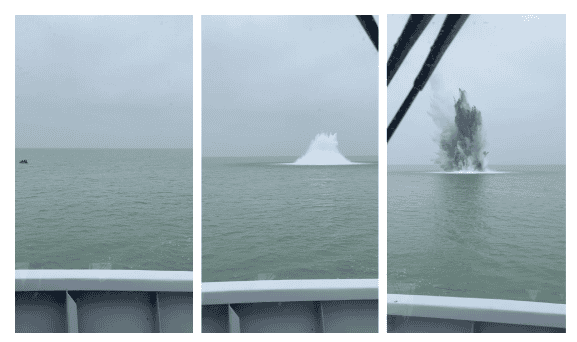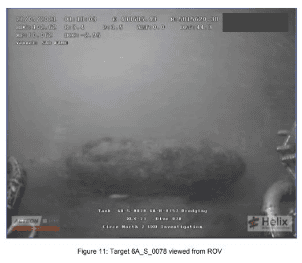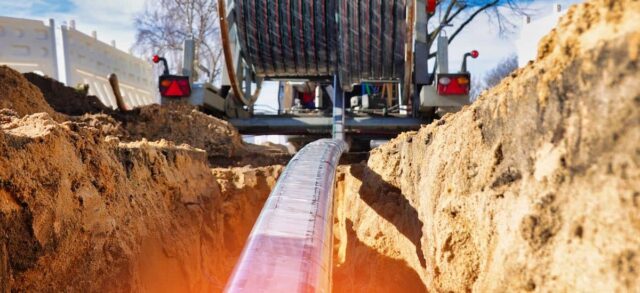The real story from Zayo – a Tier-1 Carrier
Capturing the interest of a highly intellectual and tech-savvy audience in a speaking session can be a daunting task. As I prepared to deliver a talk at an upcoming LINX event, I found myself asking this question: How can I truly engage my peers who are influential figures in the Internet and Data Centre industries? The last thing I wanted to do was speak about something they’ve heard time and time again…
I decided I needed to take a different approach – something unexpected. And so, rather than speaking about our network expansions or our services, I made a bold decision to provide a genuine, behind-the-scenes account of managing major projects at a Tier-1 provider. From dealing with acts of nature to World War II era bombs to abandoned vehicles… these are the stories that go untold.
Here is my account of the challenges and obstacles we have faced.
Some of the most common obstacles our teams face during fibre builds are natural ones. From large tree roots to forest fires, Mother Nature tends to play a starring role in our fibre builds. It’s our goal to treat these situations with the utmost respect for nature, causing as little damage to the natural landscape as possible.
During a long-haul fibre build in Germany, Zayo engineers ran into an obstruction underground that prevented us from laying cable. A closer examination unveiled the culprit: the tenacious roots of a tree were causing damage to our fibre ducts. So what next? We sought the advice of local environmental experts and devised a plan that would allow us to preserve the tree while continuing our critical work. By selectively removing only the roots that threatened our network, and not the ones that would kill the tree, we ensured both the survival of the tree and the success of our build.
Tree roots aren’t the only obstacles we’ve encountered during builds. The scorching summers of Europe have ushered in an era of increased forest fires, amplifying the risks we face during our fibre upgrades. Because of this, we’ve taken proactive measures to safeguard our employees and our network, especially on critical routes like Paris to Lyon to Marseille.
And where there’s fire, there’s smoke. We build In-Line Amplifier buildings (ILAs) that improve the optical signal of our customers’ wavelength or dark fibre long-haul networks. We recently completed a major upgrade of our ILAs, located in both rural and coastal areas. Curious to know the project lead’s experience, I inquired about the most unforeseen obstacle he had to overcome. His response left me astounded: “smoked fish!”. As it turns out, one of our coastal ILAs is located in close proximity to a fishmonger’s smokehouse. The air filter at this particular ILA requires more-than-regular replacement thanks to the smoky fish aroma wafting from the neighbouring establishment. The silver lining? He has quick access to some very tasty, very fresh smoked fish!
Ready, Set, Wait!
The land is one thing, but nothing is more unpredictable or challenging than building the Internet under the sea. As we meticulously planned the build of Zeus, our new subsea cable connecting the UK to Europe, we mapped out an exhaustive list of variables and risks – but of course, we missed one: the world’s most prestigious motor racing competition.
The Dutch Grand Prix, a Formula One motor racing event, hadn’t been held at Circuit Zandvoort since 1985. It just happened to return to Zandvoort at the same location – and at the same time – we were laying Zeus. The amount of spectators and traffic in the area meant the completion of our build was dependent on the completion of this racing event. Finally, in July 2022, the car race came to an end, and the race to build Zeus was back on. While the delay was frustrating it was well worth it: Zeus now provides the most direct route between the UK and Amsterdam, a key European hub.
Red Tape and Paperwork
To deliver Zeus we had to negotiate, manage, and administer no less than 17 contracts. This kept Scott, our VP & General Counsel for Europe, very busy for a couple of years!
With each contract, a new layer of complexity arose, spanning a wide range of responsibilities: from securing professional divers to enlisting specialised boats including guard vessels to main lay vessels, no stone was left unturned. We agreed to several crossing agreements with oil and gas pipeline owners where our cable crossed the path of their infrastructure, acutely aware of the astronomical penalties should any damage occur.
Our commitments for this build extended into uncharted territories as we even arranged compensation for beach cafe owners in Zandvoort. European seaside small businesses rely on the bustling influx of summer tourists to sustain their operations. And as cafe owners rely on the summer to bring tourism, Zayo also relied on warm weather to cross the North Sea and bring Zeus to land. Doing this work during other times of the year could have resulted in unpredictable weather in the North Sea, potentially causing unsafe work environments and delayed progress. By orchestrating the fair compensation to these beachside cafes, we made sure our build did not disrupt the equilibrium of these businesses.

We worked closely with both the British and the Dutch Navy. Our shared objective: to overcome any obstacles that lay in Zeus’s path. To our surprise, we encountered an unexploded World War II bomb (now that’s not something you see everyday) along our route. Cue the Dutch Navy for expert detonation.

To the left is the survey image that found the bomb.
Managing the Complexity of Metro Builds
While long-haul fibre builds pose significant challenges, city metro builds also have their unique obstacles. Access right difficulties arise from city bridges, railways, and waterways, requiring imagination and time-consuming negotiations with local authorities.
One particular instance stands out. Picture this: an abandoned car, parked directly over a splice chamber lid, completely indifferent to our mission, threatening to derail our meticulous plans and timeline. While our expertise in constructing metro networks in major European hubs like London, Paris, Amsterdam, Frankfurt, and Milan had prepared us for many scenarios, the removal of this car was new. So, we called the police. They were able to move the defiant vehicle so we could continue on with our build.
So you might not at first think acts of nature, World War II era bombs, or abandoned vehicles have much to do with our business of operating one of the industry’s largest fibre networks – but surprisingly, they do!
You can learn more about Zayo in Europe here: https://zayoeurope.com/info/eu/

